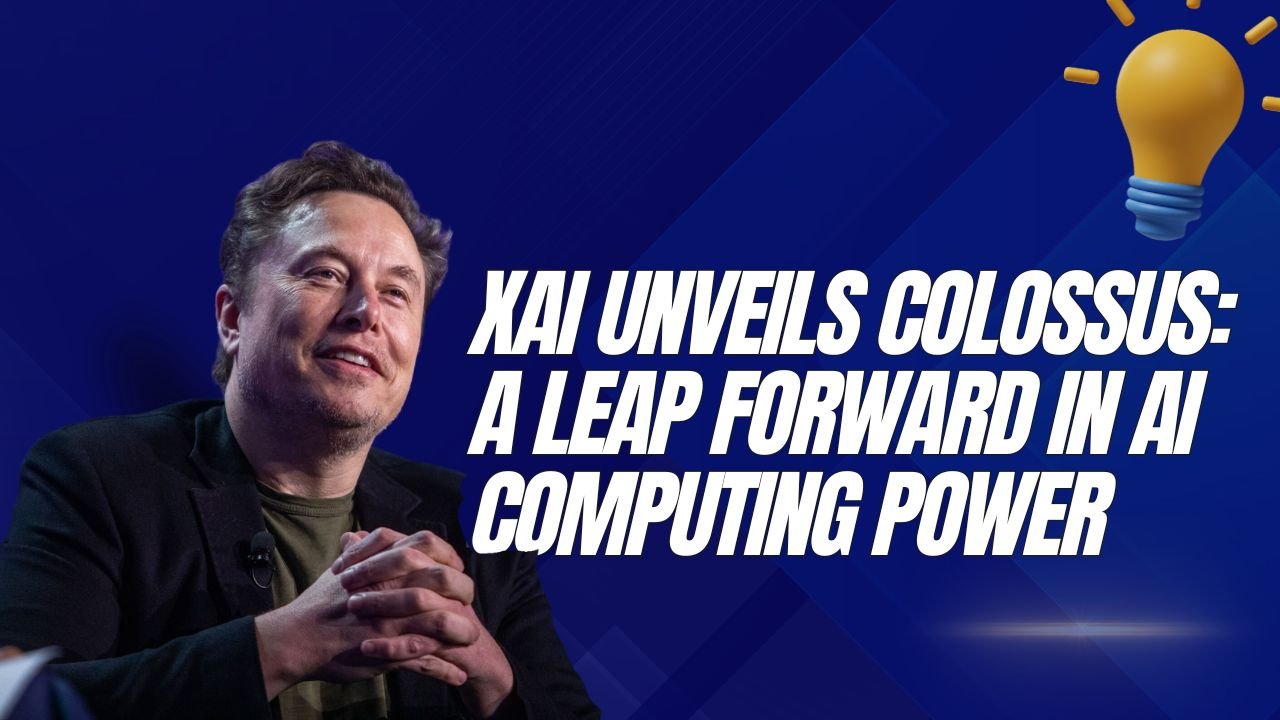Elon Musk’s xAI has unveiled Colossus, a behemoth AI training system that pushes the boundaries of computational power. Built in an astonishingly short span of 122 days, Colossus is being hailed as the world’s most powerful AI training cluster, positioning xAI at the forefront of the AI race.
The Titan of AI Hardware
Colossus is a marvel of modern computing, boasting an unprecedented 100,000 Nvidia H100 GPUs. This makes it the largest individual AI compute cluster to date, dwarfing the capabilities of many existing supercomputers. Located in Tennessee, the system’s rapid assembly is a testament to xAI’s ambitious timeline and resource management.
The heart of Colossus lies in its use of Nvidia’s H100 chips, renowned for their exceptional performance in AI workloads. These chips come equipped with Transformer Engine modules, specifically optimized for running AI models based on the Transformer neural network architecture. This specialization is crucial for the development and training of large language models like xAI’s Grok.
Strategic Implications for xAI and the AI Industry
The unveiling of Colossus marks a significant milestone in xAI’s journey to challenge industry titans like OpenAI and Google. Elon Musk has set an ambitious goal for the system: to train Grok-3, which he hopes will become “the most powerful AI in the world” by December 2024. This bold statement underscores xAI’s determination to make a lasting impact on the AI landscape.
The development of Colossus also has potential ripple effects beyond xAI. Many experts speculate that Grok, powered by Colossus, could eventually become the AI behind Tesla’s humanoid robot Optimus. Musk has high hopes for this project, projecting it could generate up to $1 trillion in annual profits.
Intensifying Competition in the AI Arms Race
The launch of Colossus has intensified the already fierce competition among tech giants for AI supremacy. Companies like Microsoft, Google, and Amazon are scrambling to secure Nvidia’s coveted Hopper series AI chips, creating a high-stakes market for these crucial components.
xAI’s ability to rapidly deploy Colossus stems from a strategic advantage: leveraging its relationship with Tesla, which had already secured a significant supply of Nvidia GPUs. This move has potentially allowed xAI to leapfrog competitors in AI development capabilities, highlighting the critical role of hardware in advancing machine learning and artificial intelligence technologies.
Looking to the Future: Expansion Plans
xAI’s ambitions don’t stop with the current iteration of Colossus. Plans are already in motion to double the system’s capacity in the coming months, expanding it to an impressive 200,000 GPUs. This upgrade will include the addition of 50,000 of Nvidia’s more advanced H200 series chips, which are approximately twice as powerful as the current H100s.
This expansion is expected to further cement Colossus’s position as the world’s largest GPU supercomputer and significantly boost xAI’s AI training capabilities. The enhanced power could potentially accelerate the development of future versions of Grok, pushing the boundaries of what’s possible in artificial intelligence.
Conclusion: A New Chapter in AI Development
The unveiling of Colossus represents more than just a technological achievement; it’s a bold statement of intent from xAI and Elon Musk. As the AI industry continues to evolve at a breakneck pace, systems like Colossus will play a crucial role in shaping the future of artificial intelligence.
With its unprecedented scale and the ambitious goals set for it, Colossus is set to be a key player in the next chapter of AI development. As xAI races to leverage this immense computational power, the tech world watches with bated breath to see what breakthroughs and innovations will emerge from this titan of AI computing.

